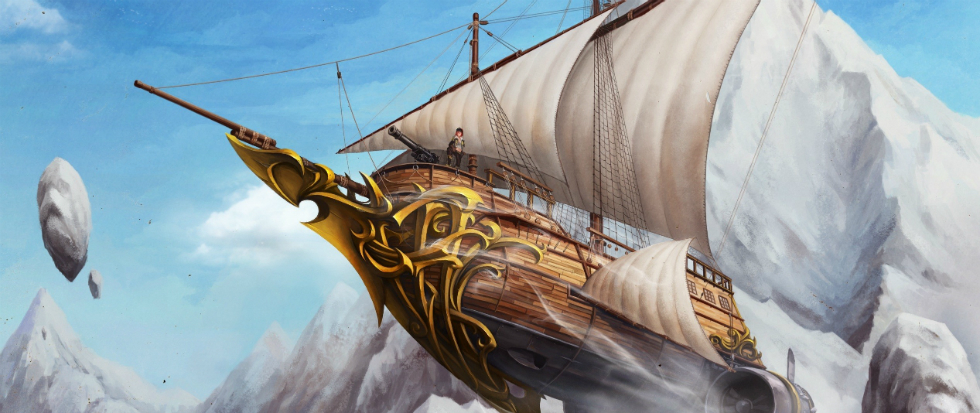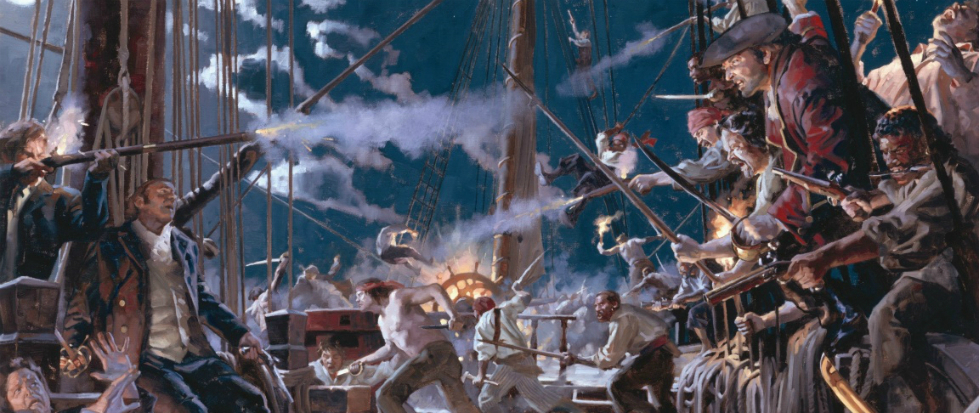
Diary of a 1st-time Interactive Fiction Developer
This is the third in an ongoing series about a fumbling idiot’s attempt to make some interactive fiction. You can find pieces one and two here and here, if this is your first time and you don’t want any early plot beats to get spoiled.
———
Part Three: The Bank Jobs
13th June, 2016
Last time out, right before I filed my last interactive fiction diary entry, I went to the inklewriter page, clicked on a big red button marked “get started” and realized that I needed a to-do list.
I like to-do lists a lot. Without a to-do list, I’m just another person doing stuff; with one, I’m accomplishing things. This to-do list, though, was going to be even more exciting than normal. It was going to be a list of all the features that I needed to plan before I started making my interactive fiction.
The prototype I made last diary entry gave me some idea of how inklewriter worked but was still a rambling mess that I made up as I went along. A stream-of-consciousmess, if you will. My to-do list is a way of counter-acting that. And it’s a weighty document – maybe not long enough to challenge the greats of Russian literature but I still wouldn’t like to be pinned underneath it without access to a supply of water and pretzels. Summarized a lot, I need to sort out some characters, a beginning, middles, endings, a theme, a style, and a setting with some kind of world history. Each of these is broken down further. My characters, for example, need names, motivations, conflicts, development, backgrounds and so on.
Item number one on the list is “mechanics”. So far I don’t really have any idea of how the fight that’s supposed to be at the center of my interactive fiction will work. Will the player be allowed to make a wrong choice at any point? Can the protagonist be killed? If so, how can I signal that? It sucks being killed in a game without warning. Sometimes it can be funny (as the old Sierra point and clicks show) but a lot of the time it’s just frustrating and confusing (as the old Sierra point and clicks show). Unless unexpected deaths are in some way a tool for enjoying the game, it seems like bad design to me.
An alternative model would have choices driving characterization and play style rather than success or failure. It might lack some of the tension of the life/death approach and lead to a slower-paced game, but it could give players more authorship over the character they are playing. Choices could still have positive or negative consequences – a player might choose to make their protagonist a sniveling coward rather than a hero, for example, perhaps turning that on its head with decisions later in the game.
Or players could be presented with something closer to a consistent inventory of options at each branching point in the story, with each one being eliminated whenever it is chosen by the player. Say they have a piece of string, a well-gnawed bit of chewing gum and they’re hopping around on one shoe – if they use the gum to attach a bomb to a terrorist’s back, it gets eliminated from the inventory and only the shoe and string are left for future branches.
I’m sure there are other approaches as well, but I haven’t thought of most of them and those I did stumble on aren’t as interesting to me. I briefly considered a David-Cage-Heavy-Rain-esque scenario, for instance, that has players controlling all the characters, working more as a director more than protagonist, but it just sounds less fun. Players would still be limited to the choices that I let them have, which I assume would feel restrictive, and it wouldn’t really work if I want to go the slow-motion direction with the fight scene.
Prototypes
I had too many questions, so I did what I imagined sophisticated programmer-types would do in my place (i.e. a place fenced in by pizza boxes and half-crushed energy drink cans). I made three prototypes. One allowed for the player character to die, another focused more on characterization, and the last one was based on a finite inventory of options. If you fancy running through any of them, I’d recommend #3 as the most fully complete.
Prototype 1: http://writer.inklestudios.com/stories/bdcm
When I started the prototypes, I plummeted down the same spiral into panic that I had when I started this week. I had no setting. No characters. No plots.
So I based all these little snippets of interactive fiction around bank robberies. Bank jobs are always the best part of the movies that contain them as well as the easiest way to improve any movie that doesn’t. Tell me that Schindler’s List wouldn’t be better with a bank heist to liven up the middle third and mean it. Go on. Just try.

I was worried for this first prototype that it would be difficult to signal to players that a choice might result in their character’s death. Even if I thought that a signal was clear, other people might not. A flag I might think I have painted in bright bloody scarlet might look a nice sky blue to some people or have a cartoon bunny on it.
So I guess I tried to shoot all the bunnies. I tried to make the choices distinctive and obvious enough that it was clear when a choice might be dangerous. I used pointers like gunshots pinging off the floor to warn that turning and pointing a gun at your attackers might be an especially dangerous move. Eventually, I think that would get tiresome, but it might be ok in a short game like mine will be.
Probably the most interesting finding from the prototype was that a player cannot avoid defining the protagonist’s character. If the player chooses safer options, then their protagonist is implicitly more careful; if the player risks death, then their protagonist is more reckless. I should have expected that really – role-playing is a natural part of playing any game. Choosing to shoot someone whilst doing a Matrix-style cartwheel, instead of just pointing and pulling a trigger, will always delineate who the protagonist is and what he is capable of to some extent.
Prototype 2: http://writer.inklestudios.com/stories/jwqj
About half-way through creating this prototype I was regretting my plan. Three prototypes? I’m an idiot. These were only supposed to be shitty little things to help me work out how the game’s system might work, but, even just with two of them, they were starting to sprawl. Every branch I created meant more options, more writing, more stories. Over three prototypes, that’s a lot.
Prototype 2’s approach was probably the most flexible of the lot. Character development might be inevitable no matter what system I go for, but removing the focus on danger allowed for a greater breadth of character types and developments. One major branch can be a hero branch, another a coward branch, and another again could focus on an inside man plot-line. And these can all be intermingled and gradated – a heroic protagonist could be superhuman or lucky; an inside man might be wracked with doubts or the leader of the raid.
Not having lethal options or some element of risk did seem strange in a fight scene, but I enjoyed worrying more about characterization than how I was going to signal to the player that they shouldn’t hide behind a small bush.
Prototype 3: http://writer.inklestudios.com/stories/95cm
I put the most work into this one, and it’s probably the best of the prototypes (in the same desperate kind of way that “Keep On Movin’” is probably the best song 5ive ever released). All the same, I never want to write anything like this ever again.
I was worried before I started that inklewriter might not be the best tool for implementing this model, as other systems more explicitly support inventories. In the end, I think it worked out ok and maybe even encouraged me to explore the fictional environment more.
No, the reason this was my least favorite approach was basic laziness. The inventory approach commits me to a certain amount of work right from the start. Whereas, with the other prototypes, the number of branches in the story changed from situation to situation, this one committed me to using up every one of the inventory options (more or less) on every route through the game. The level of repetition in choices also got tedious, both for me and for players, I think (though I never did ask anyone else to play through it).
Other benefits? I did learn that “TICK” looks good as the first word in a story. That’s nice to know.
In summary:
I failed. A little. I didn’t properly assess how or whether any of these models could impart a slow motion feel to my piece. The closest I got was the third prototype, where it didn’t really work – the limits the inventory system imposed made for a piss-poor ratio of text to player interaction.
inklewriter failed too a little. While the toolset is generally intuitive to use, I found the contents column difficult to negotiate, especially when I wanted to link up material I had already written, and I somehow lost most of my progress on one of the prototypes half-way through. That scared me. I wouldn’t like to have the same thing happen on interactive fiction I’d worked more on.
Despite all this failing, I think overall the prototypes were a success. The game-like things I’ve constructed are terrible, but I have more of an idea of  the direction I want to push my game and its mechanics in. I see the system underpinning Prototype 2 as having the most potential to reward players with an enjoyable experience, and it’s the approach I think I would enjoy writing the most.
the direction I want to push my game and its mechanics in. I see the system underpinning Prototype 2 as having the most potential to reward players with an enjoyable experience, and it’s the approach I think I would enjoy writing the most.
The bank heist setting has now become an option too. Maybe that’s something to have a look at next week, after taking in a Youtube supercut of Dog Day Afternoon, Point Break, Inside Man and the start of The Dark Knight. And, of course, all of those famous bank robberies in books, like… ummm… early Superman comics? All the same, although bank jobs tropes offer a lot of scope for plot and characterization, I could still go in a different direction. Has there ever been hostage negotiation interactive fiction before? Or one that is half constructing an assault plan with a SWAT-like team and half trying to stick to it?
I’ve stumbled on something else as well. I think I know now how I want to structure actually writing the game, which is fine compensation for the shard of my soul that was chipped off while struggling through Prototype 3. I will start by writing one route through the game, so there will definitely be content to play, and then add further branches until I get that job in corporate finance I’ve always secretly wanted and I can give up these writing shenanigans. Thinking about it another way, I want to shoot Frankenstein’s creature full of lightning after gluing together only the spine, one of the legs and a bit of the face, and then attach the ear bones and the other limbs and so on afterwards.
The prototypes did prompt a bunch of other questions, but this column is already far too long and they’re far too boring, so I’m going to skip them for now at least. I’ll have to experiment a bit more before I find the right balance in how players will interact with my world, but I’m excited to move onto things like setting and story next anyway.
Next week:
Getting set up
—
Declan Taggart is annoyed that he couldn’t think of a clever pun on interactive fiction to put in the title for this diary entry. If you would like to suggest one for next time or have answers to some of the questions he’s asking himself (yeah, I know. He should go for that finance thing, right?), please get in touch on Twitter @NonsenseThunder or however you want.





